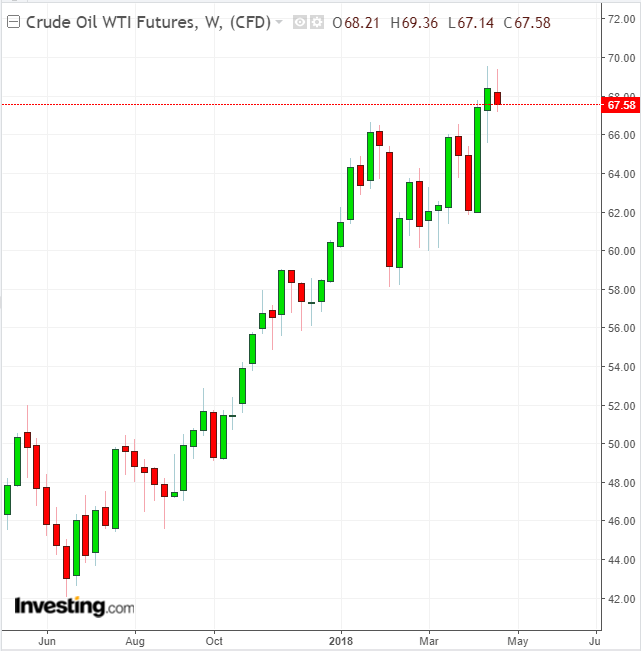Thanks to OPEC and President Donald Trump, oil prices took a big dip last Friday before rising steadily to new highs on Monday.

We can expect more volatility in oil markets over the next few weeks as OPEC’s outlook and policy for the second half of 2018 come into sharper focus, the Trump administration makes pivotal decisions with regard to sanctions on Iran and we see signs of rising oil production from the United States.
The Joint Ministerial Monitoring Committee (JMMC) for the OPEC / non-OPEC production cut deal met in Jeddah, Saudi Arabia, last Friday to assess the compliance rates of participants and discuss the organization’s progress towards meeting its goals. The JMMC congratulated participants on very high compliance rates (149%) while noting that Iraq and Kazakhstan were still producing more oil than their quotas allow.
None of this seemed to matter to the oil market, which was looking for signs of whether OPEC and Russia intend to continue the production cuts into 2019. Instead of greater clarity, the Russian and Saudi oil ministers appeared to diverge on whether production cuts should continue or not.
Saudi oil minister Khalid al Falih hinted that OPEC would seek to continue with the current production cuts when he told reporters that oil inventories still remain higher than before the price crash in 2015. He said that “the inventory drawdown needs to continue,” but added, “we are not decided yet on precisely what is the target.”
continue. “The journey is still far from over and we still have a long time to go,” he said.Russian oil minister Alexander Novak, the second most influential power in this deal, took a different tone. Before the meeting he told Russian reporters that the agreement would last through the end of 2018 but that, if market conditions required it, the group might consider relaxing some of the quotas. After the meeting, Novak told reporters that the group might discuss the possibility of increasing production during the second half of 2018 or the beginning of 2019. Such discussions would take place at OPEC’s regular meeting in Vienna on 22 June.
Essentially the oil ministers at the Jeddah meeting gave mixed messages. Yet, this mattered little to the oil market, because a tweet from President Donald Trump took precedence. After the meeting concluded, the President tweeted, “Looks like OPEC is at it again. With record amounts of Oil all over the place, including the fully loaded ships at sea, Oil prices are artificially Very High! No good and will not be accepted!”
{{%twitter%https://twitter.com/realDonaldTrump/status/987284041304100864">
Despite the fact that there is very little President Trump can do to change OPEC’s actions and decisions, markets reacted immediately to his tweet. WTI futures, which had been as high as $68.29 per barrel, immediately fell to $67.50. News that rig count in the United States had increased last week by five also kept prices depressed on Friday.
By Monday, however, the market seemed to have shaken off both the President’s tweet and the higher rig count. WTI erased Friday’s losses and continued to gain steam, reaching $68.95 per barrel by Monday night. Futures surpassed the $69 per barrel mark in early morning trading on Tuesday but remained volatile.
Now that oil supply is much tighter, the market is reacting more significantly to small issues like tweets from President Trump that have no actual impact on oil markets. If these conditions continue, which seems likely at this point, we should see even stronger short term reactions to policy decisions and statements. In fact, President Trump told the press that “nobody knows” what he will do regarding Iran on 12 May.
Look for oil price movement based on speculation about President Trump’s upcoming decision on U.S. sanctions towards Iran, any news about the summit on North Korean nuclear disarmament and continued hints from Novak, al-Falih and other OPEC participants.
